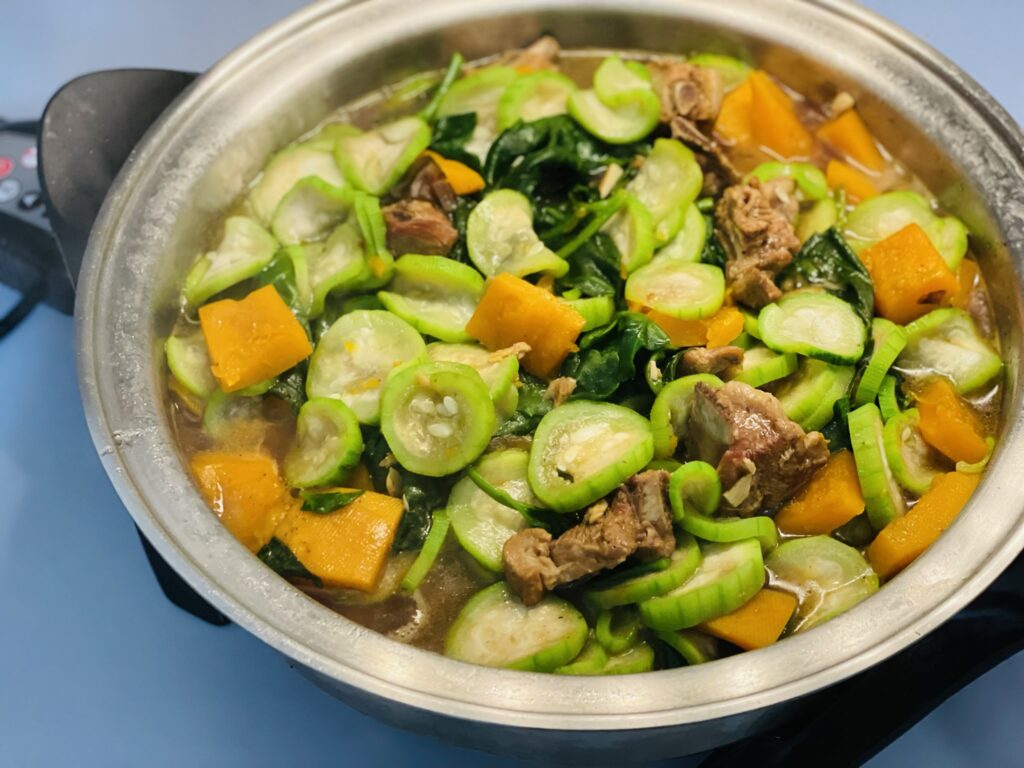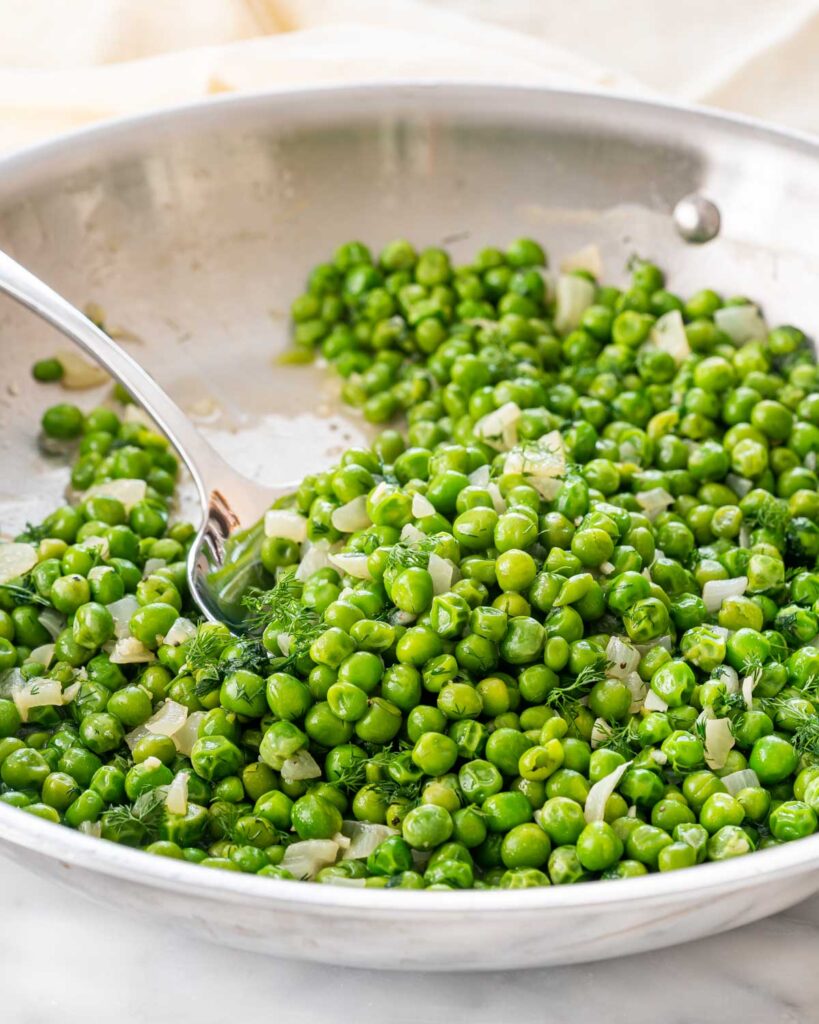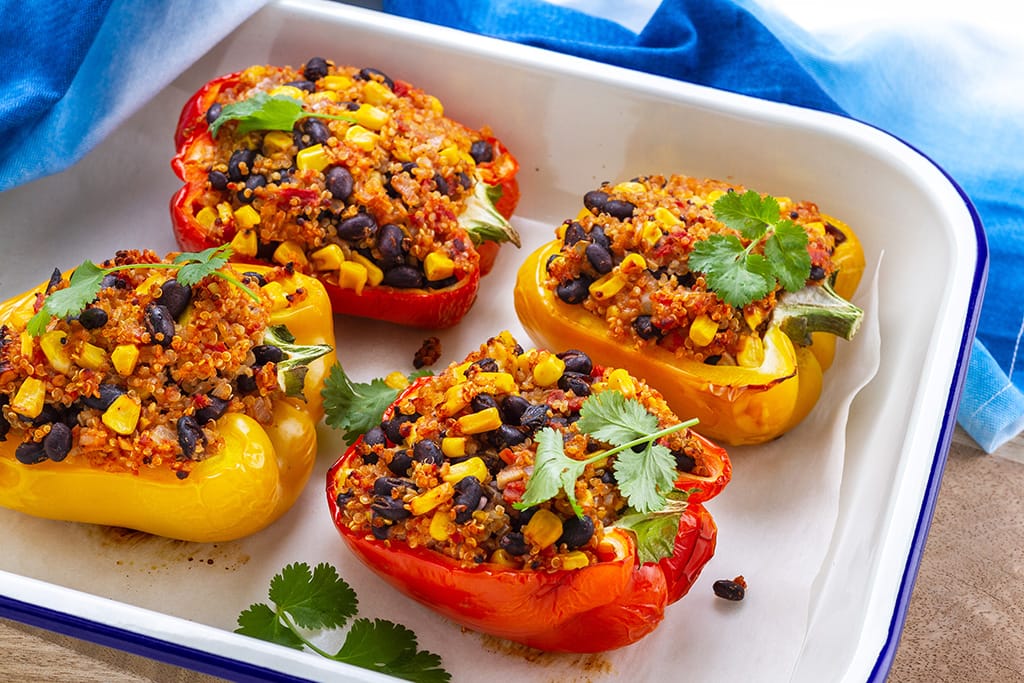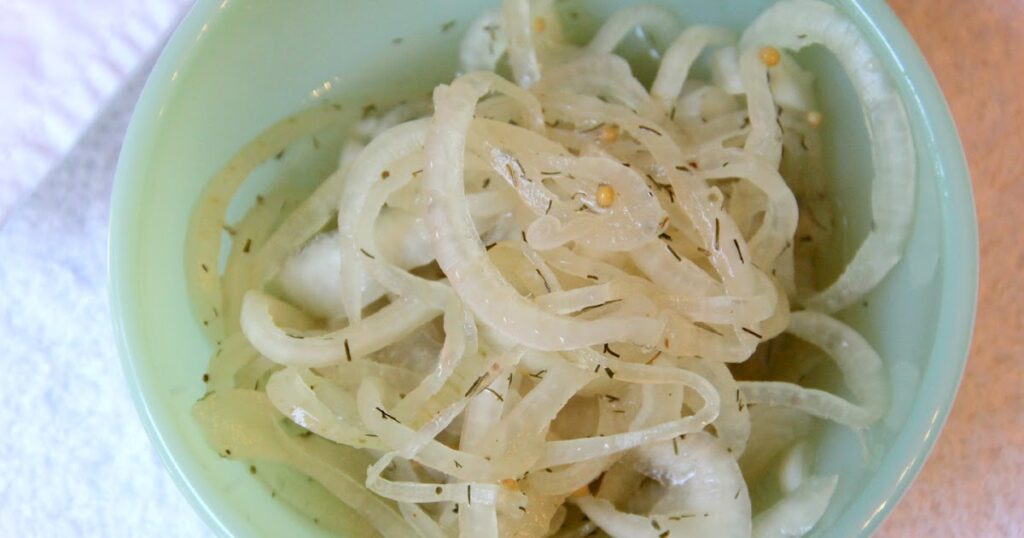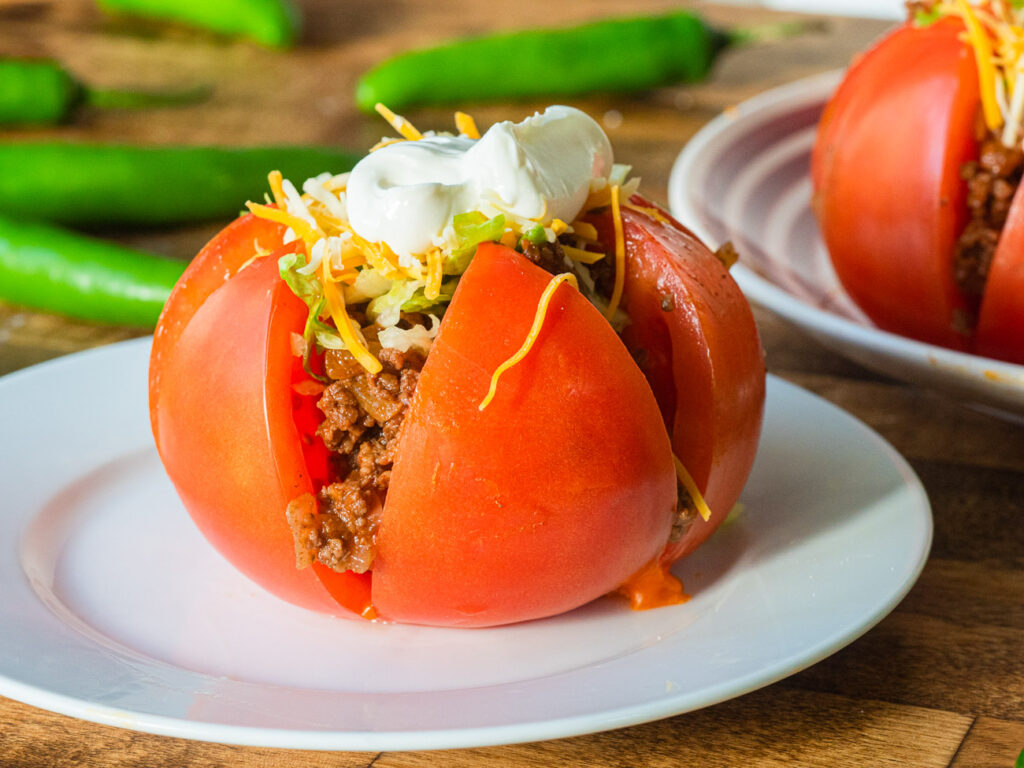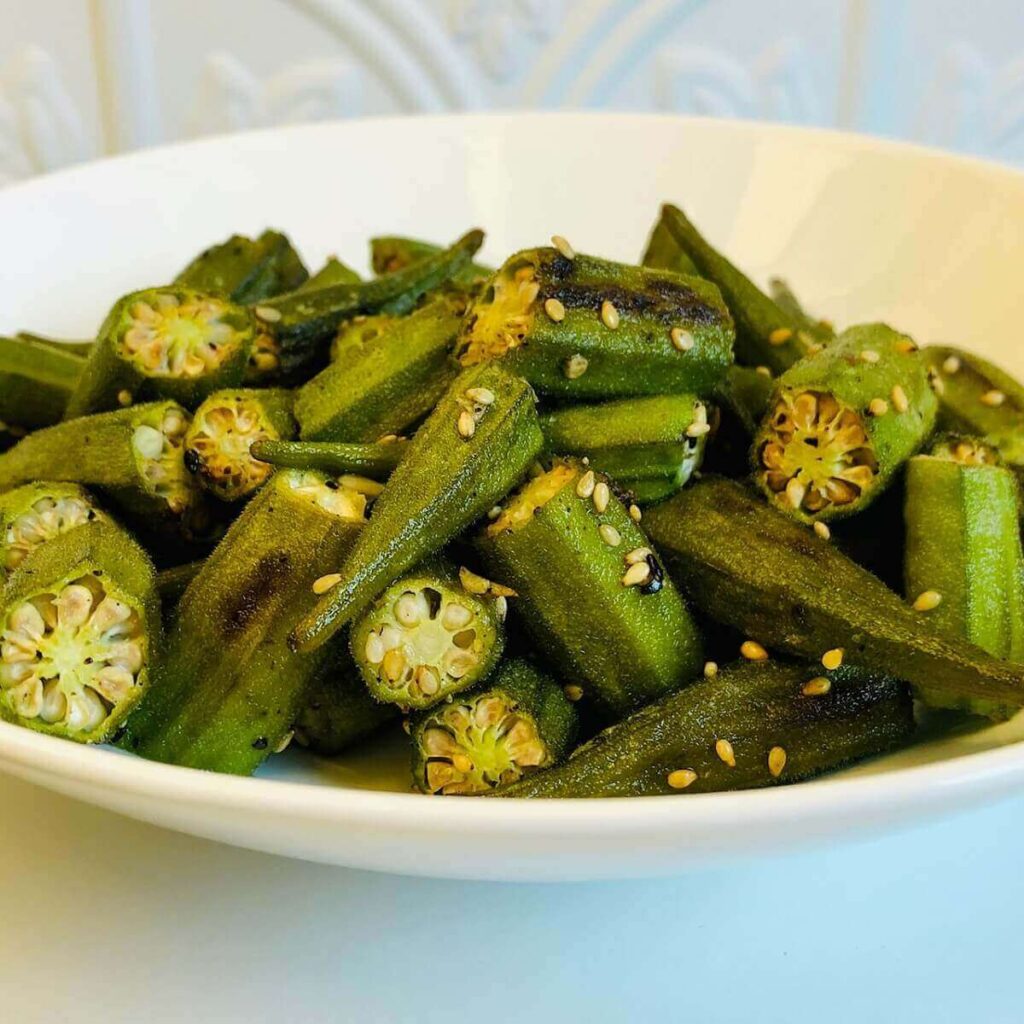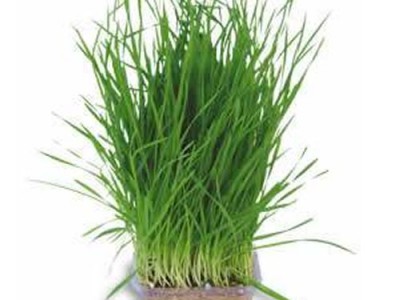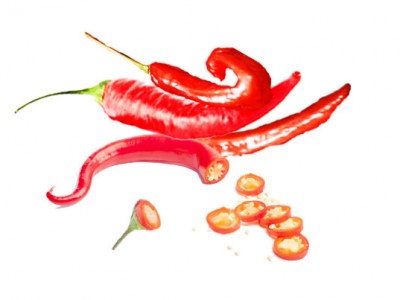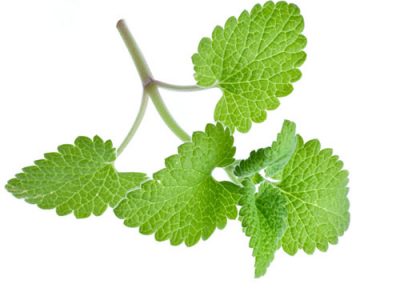
10 Best Vegetables For Summer Season
Green Bean Vegetable
1)Green Bean Vegetable For Summer Season:
Scientific Name– Phaseolus Vulgaris
Green beans, also known as snap beans or string beans, are a beloved and versatile vegetable that has found its way into kitchens and dinner tables worldwide. Scientifically known as Phaseolus vulgaris, green beans are a member of the legume family and are renowned for their vibrant green color, tender texture, and delicious taste.
Originating in Central and South America, green beans have a long history that dates back to ancient civilizations like the Aztecs and Incas. They were introduced to Europe by Spanish explorers in the 16th century and have since become a popular and cherished ingredient in diverse culinary traditions.
One of the unique features of green beans is their versatility in the kitchen. They can be enjoyed in various ways, whether they’re eaten raw in salads, steamed, boiled, sautéed, stir-fried, or roasted. Their delicate and slightly sweet flavor, coupled with their crispness, makes them a delightful addition to a wide range of dishes.
Green beans are not only delicious but also pack a nutritional punch. They are low in calories but rich in essential vitamins and minerals. They are a good source of dietary fiber, which aids digestion and supports a healthy gut. Additionally, green beans provide vitamins A, C, and K, as well as potassium, folate, and iron, contributing to overall health and well-being.
Aside from their culinary appeal and nutritional benefits, green beans are a popular choice for home gardeners due to their ease of cultivation. They thrive in many climates and can be grown in both backyard gardens and containers, making them accessible to those who wish to grow their produce.
In many cultures, green beans hold cultural significance and are celebrated during seasonal harvests and festive gatherings. They are often included in traditional dishes and are enjoyed by people of all ages.
With their wide availability and year-round presence in supermarkets, green beans have become a reliable and popular vegetable for households seeking nutritious and versatile ingredients.
In this article, we will explore the delightful world of green beans, from their historical roots to their culinary applications and health benefits. We will discover mouthwatering recipes that showcase the delightful taste and versatility of green beans, making them a staple in everyday meals and special occasions. So, let’s embark on a culinary adventure to savor the delights of green beans, a vegetable that continues to charm and nourish people around the globe.
Health Benefits Of Green Bean Vegetable:
- Hydration: Green beans have a high water content, which can help keep you hydrated during hot summer days. Staying hydrated is essential for maintaining overall health and well-being.
- Nutrient-rich: Green beans are low in calories but packed with essential nutrients. They are a good source of vitamins A, C, and K, as well as folate and fiber. These nutrients contribute to a healthy immune system, promote proper digestion, and support overall vitality.
- Antioxidants: Green beans contain various antioxidants, such as carotenoids and flavonoids. These compounds help protect your body’s cells from damage caused by harmful free radicals. Antioxidants play a role in reducing the risk of chronic diseases, including certain types of cancer.
- Digestive Health: The fiber content in green beans supports a healthy digestive system. Adequate fiber intake promotes regular bowel movements, prevents constipation, and contributes to a healthy gut microbiome.
- Weight Management: Green beans are low in calories and high in fiber, which can help you feel full and satisfied. Including green beans in your meals can assist in weight management or weight loss goals during the summer season.
- Heart Health: Green beans are a good source of heart-healthy nutrients, such as potassium and folate. Potassium helps regulate blood pressure, while folate supports cardiovascular health by reducing the levels of homocysteine, an amino acid associated with an increased risk of heart disease.
- Skin Health: The vitamins and antioxidants present in green beans can contribute to healthy skin. Vitamin C, in particular, plays a role in collagen production, which helps maintain the elasticity and firmness of the skin.
Green Bean Used For Home:
- Steamed or Boiled: Green beans can be steamed or boiled until tender-crisp and then seasoned with a little butter, olive oil, or a sprinkle of salt and pepper for a simple and nutritious side dish.
- Stir-fries: Green beans are a popular ingredient in stir-fry dishes, where they add both color and texture to the overall dish.
- Sauteed: Green beans can be quickly sauteed with garlic and olive oil, making a flavorful and healthy side dish.
- Roasted: Roasting green beans with olive oil and your favorite seasonings creates a delicious and slightly crispy texture.
- Salads: Green beans can be blanched and added to salads, providing a fresh and crunchy element.
- Green Bean Casseroles: Green bean casseroles, often made with a creamy mushroom sauce and topped with crispy onions, are a popular dish during the holiday season.
- Stews and Soups: Green beans can be included in stews and soups, adding both flavor and nutrition.
- Pickling: Green beans can be pickled with vinegar, spices, and garlic, creating a tangy and crunchy pickle.
- Mixed Vegetable Dishes: Green beans can be combined with other vegetables to create delicious mixed vegetable dishes.
Sponge Gourd Vegetable
2)Sponge Gourd Vegetable For Summer Season:
Scientific Name –Luffa Cylindrica
Sponge gourd, scientifically known as Luffa cylindrica, is a unique and versatile vegetable that belongs to the Cucurbitaceae family. Also referred to as Luffa, Dishcloth gourd, or Loofah, this vegetable is not only valued for its culinary uses but also for its surprising non-food applications.
Native to tropical and subtropical regions of Asia, sponge gourd has been cultivated for centuries and has become a treasured ingredient in various cuisines worldwide. Its elongated and cylindrical shape, coupled with a rough, fibrous exterior, sets it apart from other common vegetables.
Sponge gourd is known for its sponge-like texture, which becomes more apparent as the vegetable matures. When young and tender, it can be cooked and consumed like other gourds, with a mild and slightly sweet taste. As it matures, the fibrous network develops, creating a natural “sponge” that has various practical uses.
In many Asian cuisines, sponge gourd is a key component in soups, stews, and stir-fries. Its soft and absorbent flesh readily absorbs the flavors of other ingredients, making it an excellent addition to a variety of dishes.
Apart from its culinary applications, sponge gourd has surprising non-food uses. When mature and dried, the fibrous interior becomes the familiar loofah or sponge used for bathing and exfoliating the skin. This natural sponge is an Eco-friendly alternative to synthetic bath sponges and has been utilized for personal care for generations.
Sponge gourd is valued not only for its practicality but also for its nutritional benefits. It is a low-calorie vegetable and a good source of dietary fiber, which supports digestion and aids in maintaining a healthy digestive system. It also provides essential vitamins and minerals like vitamin C, vitamin A, calcium, and potassium.
Cultivating sponge gourd is relatively straightforward, making it a popular choice for home gardeners in tropical and subtropical regions. The plant’s rapid growth and abundant yield make it an excellent addition to backyard gardens.
In this article, we will explore the fascinating world of sponge gourd, from its origins in traditional Asian cuisines to its surprising use as a natural bath sponge. We will uncover the culinary delights of this versatile vegetable, its nutritional benefits, and the Eco-friendly alternative it offers for personal care. So, join us on a journey to discover the wonders of sponge gourd, a vegetable that continues to amaze and serve both in the kitchen and beyond.
Health Benefits Of Sponge Gourd Vegetable:
- Hydration: Similar to other vegetables, sponge gourd has a high water content, which can help keep you hydrated during hot summer days. Staying hydrated is crucial for maintaining proper bodily functions and combating dehydration.
- Nutritional Value: Sponge gourd is low in calories and rich in essential nutrients. It is a good source of dietary fiber, vitamin C, vitamin A, potassium, and iron. These nutrients contribute to overall health and well-being, supporting functions such as immune system function, digestion, and electrolyte balance.
- Cooling Effect: In traditional medicine, sponge gourd is believed to have a cooling effect on the body. Consuming sponge gourd during the summer may help reduce body heat and provide relief from heat-related discomfort.
- Detoxification: Sponge gourd contains dietary fiber, which aids in proper digestion and helps cleanse the digestive system. It can promote regular bowel movements, preventing constipation and supporting detoxification processes in the body.
- Skin Health: Sponge gourd is often used as a natural exfoliator. When the mature gourd is dried and processed, it forms a fibrous sponge that can be used to scrub the skin, helping to remove dead skin cells and promoting smoother, healthier-looking skin.
- Weight Management: Due to its low calorie and high fiber content, sponge gourd can be a beneficial addition to a weight management or weight loss diet. The fiber helps promote feelings of fullness, which can aid in portion control and reducing overall calorie intake.
- Antioxidant Properties: Sponge gourd contains antioxidants such as vitamin C and beta-carotene, which help protect cells from oxidative damage caused by free radicals. Antioxidants play a role in maintaining overall health and reducing the risk of chronic diseases.
Sponge Gourd Used For Home:
- Edible Vegetable: Young and tender sponge gourd can be peeled and cooked as a vegetable in various dishes, such as stir-fries, curries, and soups.
- Stuffed Sponge Gourd: Large sponge gourds can be stuffed with flavorful fillings, such as ground meat, rice, or other vegetables, and then cooked until tender.
- Stir-fried or Sauteed: Sponge gourd can be stir-fried or sauteed with spices, onions, and other vegetables to create a tasty side dish.
- Stuffed Sponge Gourd Leaves: In some cuisines, the leaves of the sponge gourd plant are used as a wrap to make stuffed rolls.
- Dried Sponge Gourd: The mature sponge gourd, when fully dried, can be used as a natural sponge or scrubber for household cleaning.
- Sponge Gourd in Soups: Sponge gourd can be added to soups, enhancing the overall taste and texture of the soup.
- Pickled Sponge Gourd: In some cultures, sponge gourd can be pickled with vinegar, spices, and herbs, creating a tangy and flavorful pickle.
Peas Vegetable
3)Peas Vegetable For Summer Season:
Scientific Name – Pisum Sativum
Peas, those delightful little green gems, have been a beloved vegetable for countless generations. Known scientifically as Pisum sativum, peas belong to the legume family and have a rich history that spans back to ancient times. These tender and sweet pods have enchanted taste buds and warmed hearts in cuisines around the world.
Originating in the Mediterranean region, peas have been cultivated for thousands of years, making appearances in the diets of ancient civilizations like the Greeks and Romans. The popularity of peas continued to grow over time, spreading to various regions and cultures.
Peas come in several varieties, including garden peas (also known as English peas), snow peas, and sugar snap peas. Each type offers its unique taste, texture, and culinary potential, adding diversity to the world of vegetables.
In the culinary realm, peas have been celebrated for their versatility. They can be enjoyed in numerous ways – from being simply steamed or boiled to becoming a star ingredient in a plethora of dishes, such as soups, salads, stir-fries, and casseroles. Their vibrant green color and refreshing taste make them a delightful addition to any plate.
Beyond their delicious flavor, peas offer considerable nutritional benefits. They are a good source of vitamins and minerals, including vitamin C, vitamin K, vitamin A, folate, and iron. Peas are also rich in dietary fiber and plant-based protein, making them a valuable addition to vegetarian and vegan diets.
In addition to being appreciated in the kitchen, peas have played a role in agriculture as well. They are often planted as cover crops to enrich the soil with nitrogen, a process known as nitrogen fixation, benefiting subsequent crops in a sustainable manner.
Peas have also found their place in cultural traditions, often being associated with prosperity, luck, and the arrival of spring in various celebrations and festivals.
In this article, we will explore the delightful world of peas, from their ancient roots to their modern culinary and nutritional significance. We will savor delicious pea-inspired recipes and discover the health benefits that these small but mighty vegetables offer. So, come along on a journey to embrace the charm and goodness of peas, a vegetable that continues to captivate and nourish people of all ages and cultures.
Health Benefits Of Peas Vegetable:
- Nutrient-Rich: Peas are packed with essential nutrients. They are a good source of vitamins A, C, and K, as well as folate, iron, and fiber. These nutrients support overall health, including immune function, bone health, and digestion.
- Hydration: Peas have a high water content, which can help keep you hydrated during hot summer days. Staying properly hydrated is important for maintaining bodily functions and preventing dehydration.
- Weight Management: Peas are low in calories and high in fiber, which can contribute to weight management or weight loss goals. The fiber content helps you feel full and satisfied, reducing the likelihood of overeating.
- Antioxidant Properties: Peas contain antioxidants, including flavonoids and carotenoids, which help protect the body’s cells from damage caused by free radicals. Antioxidants contribute to overall health and may help reduce the risk of chronic diseases.
- Heart Health: Peas are a good source of heart-healthy nutrients, including fiber, potassium, and vitamin C. Dietary fiber helps maintain healthy cholesterol levels, while potassium supports proper heart function. Vitamin C has been associated with a reduced risk of heart disease.
- Blood Sugar Regulation: The fiber content in peas helps slow down the digestion and absorption of carbohydrates, which can help regulate blood sugar levels. This can be particularly beneficial for individuals with diabetes or those looking to manage their blood sugar levels.
- Digestive Health: Peas are rich in dietary fiber, which supports a healthy digestive system. Fiber adds bulk to the stool, promoting regular bowel movements and preventing constipation. It also nourishes beneficial gut bacteria, supporting a healthy gut microbiome.
- Cooling Effect: In traditional medicine, peas are considered cooling and can help reduce body heat. Consuming peas during the summer may provide relief from heat-related discomfort.
Peas Used For Home:
- Side Dish: Peas can be cooked and served as a simple and nutritious side dish. They can be steamed, boiled, or sautéed with some butter or olive oil, salt, and pepper for a quick and tasty addition to any meal.
- Salads: Peas can be added to salads, providing a burst of color and sweetness. They pair well with fresh greens, cherry tomatoes, cucumbers, and other salad vegetables.
- Stir-Fries: Peas are a great addition to stir-fries, adding both flavor and texture to the dish. They can be combined with other vegetables and protein sources like tofu, chicken, or shrimp.
- Pasta Dishes: Peas can be mixed into pasta dishes, such as creamy pasta sauces or pesto pasta, for added nutrients and a pop of color.
- Risotto: Peas can be stirred into risotto, creating a vibrant and flavorful rice dish.
- Soups: Peas can be used in soups, either as a main ingredient or as a garnish. They can be pureed to create a creamy pea soup or added whole to vegetable or minestrone soups.
- Curries: Peas can be added to curries, providing a touch of sweetness and color to the spicy dish.
- Fried Rice: Peas can be included in fried rice recipes, complementing the other vegetables and adding a mild sweetness to the dish.
- Casseroles: Peas can be used in various casseroles, combining well with other ingredients like potatoes, cheese, or chicken.
- Pea Mash: Peas can be mashed or pureed to create a tasty and nutritious spread or dip, perfect for sandwiches or as a snack with crackers.
- Freezing: Peas can be blanched and then frozen, preserving their freshness and allowing them to be used later in various recipes.
- Pea Shoots: Pea shoots, the tender tips of young pea plants, can be used in salads, sandwiches, and as a garnish for added flavor and nutrition.
Capsicum Vegetable
4)Capsicum Vegetable For Summer Season:
Scientific Name – Capsicum Annuum
Capsicum, a vibrant and versatile genus of flowering plants, is a group of vegetables commonly known as peppers. Scientifically known as Capsicum annuum, this genus is a member of the nightshade family (Solanaceae) and encompasses a diverse range of peppers, each with its distinct flavor, color, and culinary uses.
Originating in the Americas, particularly in regions of Central and South America, Capsicum has a long and rich history that dates back thousands of years. It was an essential part of the diet and culture of ancient civilizations like the Maya and Aztecs, who cultivated and treasured these colorful fruits for their taste and medicinal properties.
The captivating characteristic of Capsicum is the wide variety of peppers it includes, ranging from mild and sweet bell peppers to fiery chili peppers with intense heat. This diversity of flavors and heat levels offers endless possibilities in the kitchen, allowing cooks to add depth and complexity to their dishes.
Bell peppers, with their crisp texture and sweet taste, are popular for salads, stir-fries, and stuffing. On the other end of the spectrum, chili peppers, like jalapeños, serranos, and habaneros, bring a fiery kick to salsas, sauces, and spicy dishes from various cuisines around the world.
Capsicum peppers are not only valued for their culinary attributes but also for their nutritional benefits. They are an excellent source of vitamins, particularly vitamin C, vitamin A, and vitamin B6. Additionally, they contain beneficial antioxidants, such as capsanthin and capsorubin, which contribute to their vibrant colors and may support overall health.
Beyond their role in cuisine, Capsicum has found its place in traditional medicine. The compound capsaicin, responsible for the heat in chili peppers, has been studied for its potential pain-relieving and anti-inflammatory properties.
In agriculture, Capsicum is a valuable crop due to its adaptability to various climates and growing conditions. It is cultivated worldwide, making it readily available and enjoyed by people across different cultures and continents.
The global popularity of Capsicum peppers has resulted in numerous recipes, culinary traditions, and regional specialties that celebrate their unique flavors and heat levels.
In this article, we will embark on a journey to explore the captivating world of Capsicum, from its historical origins to its modern-day culinary significance. We will savor the diverse flavors and uses of these colorful peppers and discover the nutritional benefits they offer. So, join us as we celebrate the charm and versatility of Capsicum, a genus that continues to add zest and flair to dishes and delight taste buds all around the globe.
Health Benefits Of Capsicum Vegetable:
- Hydration: Capsicum has a high water content, which can help keep you hydrated during hot summer days. Staying hydrated is important for maintaining bodily functions and preventing dehydration.
- Nutritional Value: Capsicum is low in calories and rich in essential nutrients. It is an excellent source of vitamins A and C, as well as dietary fiber. These nutrients support immune function, promote healthy skin, and contribute to overall well-being.
- Antioxidant Power: Capsicum is packed with antioxidants, including vitamin C and various phytochemicals. Antioxidants help protect the body’s cells from damage caused by harmful free radicals. A diet rich in antioxidants may help reduce the risk of chronic diseases and support overall health.
- Eye Health: Capsicum is a good source of carotenoids, including lutein and zeaxanthin, which are beneficial for eye health. These compounds may help reduce the risk of age-related macular degeneration and protect against eye damage caused by harmful UV rays.
- Digestive Health: Capsicum is a good source of dietary fiber, which aids in digestion and promotes a healthy digestive system. Fiber adds bulk to the stool, supports regular bowel movements, and helps prevent constipation.
- Cooling Effect: Capsicum is often associated with a cooling effect on the body. Consuming capsicum, especially raw or lightly cooked, may help reduce body heat and provide relief from heat-related discomfort during the summer.
- Weight Management: Capsicum is low in calories and high in fiber, making it a suitable addition to a weight management or weight loss diet. The fiber content helps you feel full and satisfied, reducing the likelihood of overeating.
- Versatile Culinary Ingredient: Capsicum is a versatile vegetable that can be used in various dishes. It adds vibrant colors, texture, and a mild sweetness to salads, stir-fries, fajitas, sandwiches, and more, making it an enjoyable and nutritious addition to your summer meals.
Capsicum Used For Home:
- Stir-Fries: Capsicum adds color and crunch to stir-fry dishes. They can be sautéed with other vegetables and protein sources like tofu, chicken, or beef.
- Salads: Capsicum is a popular ingredient in salads, providing a sweet and tangy flavor. They can be sliced or diced and combined with other salad vegetables, greens, and dressings.
- Stuffed Capsicums: Capsicum can be hollowed out and stuffed with a variety of fillings, such as rice, quinoa, or ground meat, creating a delicious and satisfying main course.
- Roasted Capsicums: Roasting capsicum brings out their natural sweetness and imparts a smoky flavor. Roasted capsicums can be used in salads, sandwiches, pasta dishes, or as a side dish.
- Pizza Topping: Capsicum is a popular topping for pizzas, adding color and flavor to the cheesy goodness.
- Soups and Stews: Capsicum can be added to soups and stews, enhancing the overall taste and texture of the dish.
- Fajitas and Tacos: Capsicum is a classic ingredient in fajitas and tacos, along with onions and other vegetables.
- Sauces and Salsas: Capsicum can be used to make sauces and salsas, adding a kick of flavor and heat to the dish.
- Pickling: Capsicum can be pickled, creating a tangy and flavorful addition to salads and sandwiches.
- Omelettes and Quiches: Capsicum can be diced and added to omelettes and quiches, contributing to a colorful and tasty breakfast or brunch option.
- Curries: Capsicum can be used in curries, adding a sweet and spicy element to the dish.
- Freezing: Capsicum can be sliced or diced and frozen, preserving their freshness and allowing them to be used later in various recipes.Pea Shoots: Pea shoots, the tender tips of young pea plants, can be used in salads, sandwiches, and as a garnish for added flavor and nutrition.
White Onion Vegetable
5)White Onion Vegetable For Summer Season:
Scientific Name – Allium cepa
White onions, a popular member of the allium family, are a versatile and widely used vegetable known for their mild flavor and distinctive appearance. Scientifically known as Allium cepa, white onions are a variety of onion with a white papery skin and crisp, juicy flesh.
Originating from Central Asia, onions have been cultivated for thousands of years and have earned a prominent place in the culinary world. Among the various onion varieties, white onions stand out for their subtle taste, making them a preferred choice for many dishes.
White onions are characterized by their delicate and slightly sweet flavor, which sets them apart from stronger-tasting onion varieties. They are a popular addition to both raw and cooked dishes, providing a pleasant onion taste without overpowering other ingredients.
In raw form, white onions add a refreshing and crunchy element to salads, salsas, and sandwiches. They can be sliced thin or diced to enhance the texture and taste of these dishes.
When cooked, white onions develop a rich, caramelized flavor that adds depth and complexity to soups, stews, stir-fries, and various savory recipes. They are often used as a flavor base, sautéed in oil or butter before adding other ingredients to a dish.
Beyond their culinary attributes, white onions offer nutritional benefits. They are a good source of vitamin C, vitamin B6, and dietary fiber. Additionally, they contain antioxidants and sulfur compounds that may contribute to overall health and well-being.
White onions are a common staple in kitchens worldwide, celebrated for their versatility and ability to complement a wide range of flavors and cuisines. They are widely available year-round, making them a readily accessible ingredient for home cooks and professional chefs alike.
In this article, we will explore the enticing world of white onions, from their historical roots to their modern-day culinary significance. We will discover the various ways they can be used to enhance the taste and texture of dishes and appreciate their unique qualities. So, join us on a flavorful journey to celebrate the charm and deliciousness of white onions, a vegetable that continues to enrich the dining experience and tantalize taste buds with their subtle yet delightful taste.
Health Benefits Of White Onion Vegetable:
- Hydration: White onions have a high water content, which can help keep you hydrated during hot summer days. Staying properly hydrated is important for maintaining bodily functions and preventing dehydration.
- Nutritional Value: White onions are low in calories and rich in essential nutrients. They are a good source of vitamins C and B6, folate, and dietary fiber. These nutrients contribute to overall health, support immune function, and promote proper digestion.
- Antioxidant Power: White onions contain antioxidants, such as flavonoids and sulfur compounds, which help protect the body’s cells from oxidative damage caused by harmful free radicals. Antioxidants have been associated with a reduced risk of chronic diseases, including certain types of cancer and heart disease.
- Anti-Inflammatory Properties: Onions, including white onions, contain compounds with anti-inflammatory properties. These compounds may help reduce inflammation in the body, which is beneficial for individuals with inflammatory conditions or those looking to support their overall health.
- Heart Health: White onions contain sulfur compounds that may help lower blood pressure and cholesterol levels, contributing to better heart health. They also contain quercetin, a flavonoid that has been associated with a reduced risk of heart disease.
- Digestive Health: White onions are a good source of dietary fiber, which aids in digestion and supports a healthy digestive system. Fiber adds bulk to the stool, promotes regular bowel movements, and helps maintain a healthy gut microbiome.
- Cooling Effect: In traditional medicine, onions are believed to have a cooling effect on the body. Consuming white onions during the summer may provide relief from heat-related discomfort.
- Culinary Versatility: White onions are commonly used in various culinary preparations, adding flavor, depth, and aroma to dishes. They can be enjoyed raw in salads, added to salsas, soups, stir-fries, or grilled as a side dish, making them a versatile and delicious ingredient for summer meals.
White Onion Used For Home:
- Salads: White onions can be thinly sliced or chopped and added to salads for a bit of zing and crunch.
- Salsas and Relishes: Finely chopped white onions are often used in fresh salsas, pico de gallo, and relishes to provide a fresh and bright taste.
- Soups and Stews: White onions are commonly used as a base ingredient for soups and stews, providing a rich flavor foundation.
- Sauteed or Caramelized: Sautéed white onions add flavor to a wide range of dishes, from pasta to stir-fries. They can also be caramelized to bring out their natural sweetness, which works great in burgers and sandwiches.
- Stir-fries and Asian Dishes: White onions are a staple in many Asian dishes and stir-fries due to their mild flavor and ability to absorb other flavors.
- Garnishes: Chopped or thinly sliced white onions can be used as a garnish for various dishes, adding both flavor and texture.
- Grilled or Roasted: Whole or halved white onions can be grilled or roasted alongside other vegetables or meats, adding a delicious caramelized taste to the dish.
- Pickling: White onions can be pickled with vinegar, sugar, and spices to create tangy pickled onions, which are great for sandwiches, tacos, or salads.
- Curries: White onions are commonly used in curries to add depth and flavor to the sauce.
Bitter Gourd Vegetable
6)Bitter Gourd Vegetable For Summer Season:
Scientific Name – Momordica Charantia
Bitter gourd, also known as bitter melon or Momordica charantia, is a distinctive and intriguing vegetable widely recognized for its bitter taste and numerous health benefits. Belonging to the gourd family (Cucurbitaceae), this unique fruit is native to tropical and subtropical regions of Asia, Africa, and the Caribbean.
The bitter gourd is easily identifiable by its oblong shape, rough-textured skin, and distinct ridges. The interior contains a fibrous core and seeds surrounded by a pithy, bitter flesh. Despite its intense bitterness, bitter gourd has been an essential part of various traditional cuisines and medicinal practices for centuries.
In culinary traditions, bitter gourd is cherished for its ability to add a bitter and slightly sweet complexity to dishes. It is a key ingredient in many Asian and Indian recipes, such as stir-fries, curries, and soups. The bitterness is often balanced with other flavorful ingredients and spices, creating unique and unforgettable taste experiences.
Beyond its culinary uses, bitter gourd holds a prominent place in traditional medicine systems, especially in Ayurveda and traditional Chinese medicine. It is believed to possess various health-promoting properties, including anti-diabetic, anti-inflammatory, and anti-microbial effects. The fruit is often consumed in the form of juices, teas, or supplements to harness its potential medicinal benefits.
Bitter gourd is also considered a low-calorie vegetable, making it an attractive choice for those seeking to maintain a healthy diet. It is rich in essential vitamins, such as vitamin C, vitamin A, and vitamin K, as well as important minerals like iron and potassium.
Additionally, bitter gourd is thought to aid digestion and support the immune system, making it a valuable addition to a balanced and health-conscious lifestyle.
Cultivating bitter gourd is relatively straightforward, and the plant can be grown in various climates, making it accessible to home gardeners interested in cultivating their produce.
In this article, we will delve into the world of bitter gourd, exploring its historical significance, culinary uses, and potential health benefits. We will uncover its cultural importance, regional specialties, and the creative ways it can be incorporated into diverse cuisines. So, let’s embark on a journey to embrace the distinctive taste and nutritional virtues of bitter gourd, a vegetable that continues to captivate and contribute to the well-being of people around the globe.
Health Benefits Of Bitter Gourd Vegetable:
- Hydration: Bitter gourd has a high water content, which can help keep you hydrated during hot summer days. Staying hydrated is crucial for maintaining proper bodily functions and preventing dehydration.
- Nutrient-Rich: Bitter gourd is low in calories and rich in essential nutrients. It is a good source of vitamins C, A, and K, as well as dietary fiber. These nutrients support immune function, promote healthy skin, aid in digestion, and contribute to overall well-being.
- Antioxidant Power: Bitter gourd is packed with antioxidants, including flavonoids, phenolic compounds, and vitamin C. Antioxidants help protect the body’s cells from oxidative damage caused by harmful free radicals. Regular consumption of bitter gourd may help reduce the risk of chronic diseases and support overall health.
- Blood Sugar Regulation: Bitter gourd has been traditionally used for its potential blood sugar-lowering effects. It contains compounds that may help improve glucose metabolism and insulin sensitivity. Consuming bitter gourd can be particularly beneficial for individuals with diabetes or those looking to manage their blood sugar levels.
- Weight Management: Bitter gourd is low in calories and high in fiber, which can aid in weight management or weight loss goals. The fiber content helps promote feelings of fullness and satiety, reducing the likelihood of overeating.
- Digestive Health: Bitter gourd contains dietary fiber, which supports a healthy digestive system. Fiber adds bulk to the stool, promotes regular bowel movements, and helps prevent constipation. Bitter gourd is also known for its potential benefits in supporting liver health and aiding in digestion.
- Skin Health: The high vitamin C content in bitter gourd supports collagen synthesis, which is important for maintaining healthy skin. Vitamin C also acts as an antioxidant, helping protect the skin from damage caused by free radicals.
- Cooling Effect: In traditional medicine, bitter gourd is believed to have a cooling effect on the body. Consuming bitter gourd during the summer may help reduce body heat and provide relief from heat-related discomfort.
Bitter Gourd Used For Home:
- Stir-Fries: Bitter gourd can be sliced or diced and added to stir-fries with other vegetables, tofu, or meat. Cooking it with flavorful sauces and spices helps balance out its bitterness.
- Curries: Bitter gourd can be used in curries, where its unique taste blends with other ingredients to create a savory and aromatic dish.
- Stuffed Bitter Gourd: Bitter gourd can be stuffed with a mixture of ground meat, spices, and herbs, creating a tasty and satisfying main course.
- Bitter Gourd Chips: Bitter gourd slices can be seasoned and fried to make crispy and flavorful chips, providing a delicious and healthy snack option.
- Soups: Bitter gourd can be added to soups, enhancing the overall flavor and nutritional value of the dish.
- Bitter Gourd Juice: Bitter gourd can be juiced with other fruits or vegetables to create a nutritious and refreshing beverage. Some people believe that bitter gourd juice has various health benefits, including helping to manage blood sugar levels.
- Pickling: Bitter gourd can be pickled in vinegar or brine, reducing its bitterness and adding a tangy flavor to salads and sandwiches.
- Bitter Gourd Fritters: Bitter gourd slices can be coated in a batter and fried to make fritters, creating a delightful and crunchy snack.
- Bitter Gourd Omelette: Bitter gourd can be added to omelettes, blending with eggs, onions, and spices to create a flavorful breakfast or brunch option.
- Bitter Gourd Chutney: Bitter gourd can be used to make chutney, which can be served as a condiment with various dishes.
Tomato Vegetable
7)Tomato Vegetable For Summer Season:
Scientific Name – Solanum Lycopersicum
The tomato, scientifically known as Solanum lycopersicum, is one of the most beloved and widely consumed fruits in the world, often regarded as a vegetable in culinary contexts. Native to the Andean region of South America, tomatoes have captivated taste buds and become an essential ingredient in countless cuisines and dishes around the globe.
With their vibrant colors, succulent texture, and rich flavor, tomatoes are a versatile ingredient that adds depth and brightness to a wide range of culinary creations. They come in various shapes, sizes, and colors, including red, yellow, green, and even purple, each offering a unique taste experience.
Tomatoes are enjoyed in many forms – from being used fresh in salads, sandwiches, and salsas to being cooked in soups, stews, sauces, and pasta dishes. Their ability to enhance the taste of dishes and complement other ingredients has earned them a treasured place in home kitchens and professional restaurants alike.
In addition to their culinary appeal, tomatoes are packed with essential nutrients and antioxidants. They are an excellent source of vitamin C, vitamin A, and potassium, while also providing beneficial compounds such as lycopene, which is associated with various health benefits.
Tomatoes have played a significant role in various cultures and cuisines, with regional specialties celebrating the diverse ways they can be enjoyed. From Italian pasta sauces to Mexican salsas and Indian curries, tomatoes continue to be an essential element in the culinary tapestry of the world.
Cultivating tomatoes is relatively straightforward, and they are commonly grown in home gardens and on a commercial scale. Their versatility, nutrition, and wide availability throughout the year have cemented their position as one of the most popular and cherished fruits/vegetables worldwide.
In this article, we will explore the captivating world of tomatoes, from their historical journey from the Andes to various parts of the world to their modern-day culinary and nutritional significance. We will savor delicious tomato-inspired recipes and discover the health benefits that make tomatoes not only a tasty addition to dishes but also a valuable component of a balanced diet. So, come along on a flavorful journey to celebrate the timeless charm and deliciousness of tomatoes, a fruit/vegetable that continues to inspire and delight food enthusiasts of all ages.
Health Benefits Of Tomato Vegetable:
- Hydration: Tomatoes have a high water content, which can help keep you hydrated during hot summer days. Staying hydrated is crucial for maintaining proper bodily functions and preventing dehydration.
- Nutrient-Rich: Tomatoes are packed with essential nutrients. They are an excellent source of vitamins C and K, potassium, and dietary fiber. These nutrients support immune function, promote healthy skin, aid in digestion, and contribute to overall well-being.
- Antioxidant Power: Tomatoes are rich in antioxidants, including vitamin C, lycopene, and beta-carotene. Antioxidants help protect the body’s cells from oxidative damage caused by harmful free radicals. Lycopene, in particular, has been associated with a reduced risk of certain cancers and cardiovascular diseases.
- Skin Health: The high vitamin C content in tomatoes plays a role in collagen production, which is essential for maintaining healthy skin. Vitamin C also acts as an antioxidant, protecting the skin from damage caused by free radicals and promoting a youthful appearance.
- Eye Health: Tomatoes contain lutein and zeaxanthin, two antioxidants that are beneficial for eye health. These compounds may help protect against age-related macular degeneration and other eye conditions.
- Weight Management: Tomatoes are low in calories and high in fiber, making them a great addition to a weight management or weight loss diet. The fiber content helps promote feelings of fullness and satiety, reducing the likelihood of overeating.
- Heart Health: Tomatoes have been associated with various cardiovascular benefits. The potassium and fiber content in tomatoes help support heart health by managing blood pressure and cholesterol levels. The antioxidants in tomatoes also contribute to heart health by reducing inflammation and oxidative stress.
- Cooling Effect: In traditional medicine, tomatoes are believed to have a cooling effect on the body. Consuming tomatoes during the summer may help reduce body heat and provide relief from heat-related discomfort.
Tomato Used For Home:
- Hydration: Tomatoes have a high water content, which can help keep you hydrated during hot summer days. Staying hydrated is crucial for maintaining proper bodily functions and preventing dehydration.
- Nutrient-Rich: Tomatoes are packed with essential nutrients. They are an excellent source of vitamins C and K, potassium, and dietary fiber. These nutrients support immune function, promote healthy skin, aid in digestion, and contribute to overall well-being.
- Antioxidant Power: Tomatoes are rich in antioxidants, including vitamin C, lycopene, and beta-carotene. Antioxidants help protect the body’s cells from oxidative damage caused by harmful free radicals. Lycopene, in particular, has been associated with a reduced risk of certain cancers and cardiovascular diseases.
- Skin Health: The high vitamin C content in tomatoes plays a role in collagen production, which is essential for maintaining healthy skin. Vitamin C also acts as an antioxidant, protecting the skin from damage caused by free radicals and promoting a youthful appearance.
- Eye Health: Tomatoes contain lutein and zeaxanthin, two antioxidants that are beneficial for eye health. These compounds may help protect against age-related macular degeneration and other eye conditions.
- Weight Management: Tomatoes are low in calories and high in fiber, making them a great addition to a weight management or weight loss diet. The fiber content helps promote feelings of fullness and satiety, reducing the likelihood of overeating.
- Heart Health: Tomatoes have been associated with various cardiovascular benefits. The potassium and fiber content in tomatoes help support heart health by managing blood pressure and cholesterol levels. The antioxidants in tomatoes also contribute to heart health by reducing inflammation and oxidative stress.
- Cooling Effect: In traditional medicine, tomatoes are believed to have a cooling effect on the body. Consuming tomatoes during the summer may help reduce body heat and provide relief from heat-related discomfort.
Cucumber Vegetable
8)Cucumber Vegetable For Summer Season:
Scientific Name – Cucumis Sativus
Cucumber, scientifically known as Cucumis sativus, is a refreshing and versatile fruit that has been cherished for its crisp texture and mild flavor for thousands of years. Often mistaken for a vegetable, cucumbers are a member of the gourd family, and they have become a beloved ingredient in culinary traditions worldwide.
Originating in South Asia, cucumbers have a long history of cultivation, dating back to ancient civilizations like the Egyptians and Romans. They have since spread to different parts of the world, becoming a staple in many cuisines and a popular addition to salads, sandwiches, and a variety of dishes.
Cucumbers are characterized by their cylindrical or oblong shape, with a thin, green skin and soft, edible seeds in the center. They come in various varieties, from the common slicing cucumbers to pickling cucumbers and the English cucumber, which is longer and seedless.
In the culinary realm, cucumbers are celebrated for their refreshing and hydrating properties. They are best enjoyed raw, providing a satisfying crunch and mild flavor that pairs well with an array of ingredients. Cucumbers add a refreshing element to salads, wraps, and cold soups, making them a perfect ingredient for light and summery dishes.
Nutritionally, cucumbers are low in calories and high in water content, making them a hydrating and nutritious choice. They are a good source of vitamins K and C, as well as essential minerals like potassium and magnesium. Additionally, cucumbers contain antioxidants, contributing to their potential health benefits.
Cultivating cucumbers is a popular choice for home gardeners, as they can be easily grown in containers or garden plots. With proper care, they can yield a bountiful harvest throughout the growing season.
In many cultures, cucumbers hold cultural and symbolic significance. They are often associated with freshness, coolness, and vitality, and they are commonly featured in various culinary and wellness practices.
In this article, we will explore the refreshing world of cucumbers, from their historical roots to their modern-day culinary and nutritional significance. We will savor delicious cucumber-inspired recipes and uncover the health benefits that make cucumbers a cherished fruit, bringing both hydration and nourishment to our plates. So, let’s embrace the crisp and versatile charm of cucumbers, a fruit that continues to captivate and inspire food enthusiasts with its delightful attributes.
Health Benefits Of Cucumber Vegetable:
- Hydration: Cucumbers are made up of about 95% water, making them an excellent hydrating food. Eating cucumbers helps keep you hydrated and replenishes fluids lost during hot summer days, helping to maintain proper bodily functions and prevent dehydration.
- Nutritional Value: Cucumbers are low in calories and rich in essential nutrients. They are a good source of vitamins C and K, as well as minerals like potassium and magnesium. These nutrients support immune function, promote healthy skin, aid in digestion, and contribute to overall well-being.
- Cooling Effect: Cucumbers have a cooling and refreshing effect on the body, making them an ideal summer food. Their high water content, combined with their crunchiness, can help lower body temperature and provide relief from heat-related discomfort.
- Hydrating Skin: Cucumbers are often used topically as a natural remedy for soothing and hydrating the skin. Placing cucumber slices on the skin can help hydrate and rejuvenate the skin, reduce puffiness around the eyes, and provide a refreshing sensation.
- Digestive Health: Cucumbers are rich in dietary fiber, which supports a healthy digestive system. Fiber adds bulk to the stool, promotes regular bowel movements, and helps prevent constipation. The high water content in cucumbers also aids in digestion.
- Weight Management: Cucumbers are low in calories and high in water and fiber, making them a great addition to a weight management or weight loss diet. The fiber content helps promote feelings of fullness and satiety, reducing the likelihood of overeating.
- Antioxidant Power: Cucumbers contain various antioxidants, including flavonoids and vitamin C, which help protect the body’s cells from oxidative damage caused by harmful free radicals. Regular consumption of cucumbers may contribute to overall health and reduce the risk of chronic diseases.
- Kidney Health: The high water content in cucumbers can help promote proper kidney function and the elimination of toxins from the body. Cucumbers act as a natural diuretic, aiding in the flushing out of waste products and supporting healthy urinary system function.
Cucumber Used For Home:
- Fresh Salads: Cucumbers are a staple ingredient in fresh salads, providing a cool and crunchy element. They can be sliced, chopped, or spiralized, and combined with other vegetables, fruits, and dressings.
- Cucumber Sandwiches: Thinly sliced cucumbers are often used as a filling in sandwiches, adding a refreshing taste and texture.
- Tzatziki Sauce: Cucumbers are a key ingredient in tzatziki, a Greek yogurt-based sauce that is often served with grilled meats or as a dip.
- Cucumber Sushi Rolls: In sushi, cucumbers are commonly used as a filling in vegetarian sushi rolls, adding a pleasant crunch.
- Pickles: Cucumbers can be pickled with vinegar, water, salt, and spices, creating tangy and flavorful pickles that can be enjoyed as a snack or a condiment.
- Cucumber Soup: Cucumbers can be used to make chilled cucumber soup, a refreshing and light summer dish.
- Cucumber Water: Slices of cucumber can be added to water to infuse it with a subtle cucumber flavor, creating a refreshing beverage.
- Cucumber Raita: Cucumbers are used in raita, an Indian yogurt-based side dish, where they add a cooling effect to spicy meals.
- Cucumber Noodles: Cucumbers can be spiralized into noodles and used as a low-carb alternative to pasta in salads or as a base for various dishes.
Okra Vegetable
9)Okra Vegetable For Summer Season:
Scientific Name –Abelmoschus Esculentus
Okra, scientifically known as Abelmoschus esculentus, is a versatile and nutritious vegetable that has been cherished for centuries in various culinary traditions around the world. Also commonly referred to as “lady’s finger” or “bhindi,” okra is a member of the mallow family (Malvaceae) and is recognized for its elongated and tapered green pods.
Originating in Africa, okra has traveled across continents through trade routes and migration, becoming an integral part of the culinary landscape in many countries. It is widely cultivated in warm and tropical regions due to its ability to thrive in hot climates.
One of the defining features of okra is its unique texture, which is both tender and slightly slimy when cooked. This mucilaginous quality is prized in many dishes, contributing to the thickening of soups, stews, and sauces.
Okra is loved for its versatility in the kitchen. It can be cooked in various ways, including frying, sautéing, steaming, and grilling. It pairs well with a wide range of spices, herbs, and other vegetables, making it a versatile ingredient in both vegetarian and non-vegetarian dishes.
In many cuisines, okra is a key component of traditional recipes. It is featured prominently in dishes like gumbo in Creole and Cajun cuisine, bamia in Middle Eastern cuisine, and bhindi masala in Indian cuisine.
Beyond its culinary appeal, okra is rich in essential nutrients. It is an excellent source of dietary fiber, vitamin C, and vitamin K, as well as minerals like potassium and magnesium. Okra also contains antioxidants, contributing to its potential health benefits.
Cultivating okra is relatively straightforward, and it can be grown in home gardens or even in containers on balconies, making it accessible to home gardeners interested in cultivating their produce.
In recent years, okra has gained popularity as a nutritious and delicious vegetable, attracting attention from chefs and home cooks alike. Its unique texture, flavor, and nutritional value continue to inspire creative and flavorful dishes that celebrate the culinary heritage of okra.
In this article, we will explore the captivating world of okra, from its historical roots to its modern-day culinary significance. We will savor delicious okra-inspired recipes and discover the health benefits that make okra a valuable addition to a balanced diet. So, let’s embark on a flavorful journey to celebrate the charm and deliciousness of okra, a vegetable that continues to enrich our palates and nourish our bodies with its unique attributes.
Health Benefits Of Okra Vegetable:
- Hydration: Okra has a high water content, which can help keep you hydrated during hot summer days. Staying properly hydrated is important for maintaining bodily functions and preventing dehydration.
- Nutritional Value: Okra is low in calories and rich in essential nutrients. It is a good source of dietary fiber, vitamins C and K, folate, and minerals like magnesium and potassium. These nutrients support immune function, promote healthy digestion, aid in bone health, and contribute to overall well-being.
- Digestive Health: Okra is rich in dietary fiber, which helps support a healthy digestive system. Fiber adds bulk to the stool, promotes regular bowel movements, and helps prevent constipation. It also nourishes beneficial gut bacteria, supporting a healthy gut microbiome.
- Blood Sugar Regulation: The fiber content in okra helps slow down the digestion and absorption of carbohydrates, which can help regulate blood sugar levels. This can be particularly beneficial for individuals with diabetes or those looking to manage their blood sugar levels.
- Heart Health: Okra is a good source of soluble fiber, which helps lower cholesterol levels and promotes heart health. The fiber content can also help manage blood pressure levels. Additionally, okra contains antioxidants and other beneficial compounds that contribute to cardiovascular health.
- Antioxidant Properties: Okra contains antioxidants such as flavonoids, polyphenols, and vitamin C, which help protect the body’s cells from oxidative damage caused by harmful free radicals. Antioxidants play a role in maintaining overall health and reducing the risk of chronic diseases.
- Weight Management: Okra is low in calories and high in fiber, making it a suitable addition to a weight management or weight loss diet. The fiber content helps promote feelings of fullness and satiety, reducing the likelihood of overeating.
- Cooling Effect: In traditional medicine, okra is believed to have a cooling effect on the body. Consuming okra during the summer may help reduce body heat and provide relief from heat-related discomfort.
Okra Used For Home:
- Stir-fries and Curries: Okra is frequently used in stir-fries and curries, absorbing the flavors of the spices and sauces while maintaining its distinct texture.
- Gumbo: Okra is a key ingredient in the famous Creole dish, gumbo. It acts as a natural thickener and imparts a slightly slimy texture, which adds body to the dish.
- Fried Okra: Sliced okra is often coated in a seasoned cornmeal or flour mixture and deep-fried until crispy, creating a popular Southern-style dish.
- Roasted or Grilled: Okra can be roasted or grilled with olive oil and seasoning, enhancing its flavor and reducing its sliminess.
- Soups and Stews: Okra can be added to various soups and stews, including vegetable soups and meat-based stews, contributing a unique taste and thickening the liquid.
- Pickling: Okra can be pickled, often with spices and vinegar, creating tangy and crunchy pickled okra as a tasty snack or condiment.
- Indian Bhindi Masala: In Indian cuisine, okra (bhindi) is often cooked with spices, onions, and tomatoes to create a flavorful and delicious dish called “Bhindi Masala.”
- Okra and Tomato Sauce: Okra pairs well with tomatoes, and cooking them together creates a delightful combination in both flavor and texture.
- Sauteed or Steamed: Okra can be sautéed with garlic, onions, and other vegetables or lightly steamed to retain its nutrients and natural taste.
Pumpkin Vegetable
10)Pumpkin Vegetable For Summer Season:
Scientific Name – Cucurbita Pepo
Pumpkin, scientifically known as Cucurbita pepo, is a beloved and iconic fruit that holds a special place in many cultures and seasonal celebrations around the world. Known for its vibrant orange color, sweet and earthy flavor, and versatility in the kitchen, pumpkins have become a symbol of autumn and a staple ingredient in various cuisines.
Native to North America, pumpkins have a long history that dates back thousands of years. They were cultivated by indigenous peoples and later introduced to other parts of the world through exploration and trade. Today, pumpkins are grown in diverse regions, and their popularity has spread far beyond their original homeland.
Pumpkins are often associated with fall festivals, harvest celebrations, and holidays such as Halloween and Thanksgiving. They are carved into jack-o’-lanterns, creating spooky and festive decorations, while their flesh is transformed into delicious seasonal dishes that warm the hearts and delight the taste buds.
In the culinary realm, pumpkins offer a wide range of culinary applications. They can be roasted, boiled, steamed, or mashed, creating the foundation for soups, stews, pies, and other baked goods. Pumpkin puree is a common ingredient in various desserts, adding a natural sweetness and velvety texture.
Beyond their culinary uses, pumpkins are a nutritious addition to the diet. They are low in calories and high in essential vitamins and minerals, including vitamin A, vitamin C, and potassium. Their bright orange color is an indication of their high antioxidant content, contributing to potential health benefits.
Cultivating pumpkins is relatively straightforward, and they are often grown in home gardens, especially during the fall season. Their large, sprawling vines yield abundant fruit, making them a popular choice for those interested in growing their produce.
In addition to their culinary and decorative value, pumpkins have found their place in various cultural traditions and folklore, representing abundance, fertility, and the spirit of the harvest season.
In this article, we will explore the enchanting world of pumpkins, from their historical significance to their modern-day culinary and cultural importance. We will savor delicious pumpkin-inspired recipes and discover the health benefits that make pumpkins a wholesome addition to seasonal menus. So, let’s embrace the warmth and charm of pumpkins, a fruit that continues to bring joy, nourishment, and a touch of magic to our tables and festivities.
Health Benefits Of Pumpkin Vegetable:
- Hydration: Pumpkin has a high water content, which can help keep you hydrated during hot summer days. Staying properly hydrated is important for maintaining bodily functions and preventing dehydration.
- Nutritional Value: Pumpkin is rich in essential nutrients. It is an excellent source of vitamins A, C, and E, as well as dietary fiber, potassium, and magnesium. These nutrients support immune function, promote healthy skin, aid in digestion, and contribute to overall well-being.
- Antioxidant Power: Pumpkin is packed with antioxidants, including beta-carotene, vitamin C, and various phytochemicals. Antioxidants help protect the body’s cells from oxidative damage caused by harmful free radicals. Regular consumption of pumpkin may help reduce the risk of chronic diseases and support overall health.
- Eye Health: The beta-carotene in pumpkin is converted into vitamin A in the body, which is essential for good vision and eye health. Consuming pumpkin may help reduce the risk of age-related macular degeneration and other eye conditions.
- Weight Management: Pumpkin is low in calories and high in fiber, making it a suitable addition to a weight management or weight loss diet. The fiber content helps promote feelings of fullness and satiety, reducing the likelihood of overeating.
- Digestive Health: Pumpkin is a good source of dietary fiber, which supports a healthy digestive system. Fiber adds bulk to the stool, promotes regular bowel movements, and helps prevent constipation. It also nourishes beneficial gut bacteria, supporting a healthy gut microbiome.
- Skin Health: The vitamins A, C, and E in pumpkin contribute to healthy skin. These vitamins help promote collagen production, protect against oxidative damage, and maintain a youthful appearance. Pumpkin can also be used topically in homemade face masks or scrubs to nourish and rejuvenate the skin.
- Cooling Effect: In traditional medicine, pumpkin is believed to have a cooling effect on the body. Consuming pumpkin during the summer may help reduce body heat and provide relief from heat-related discomfort.
Pumpkin Used For Home:
- Pumpkin Pie: One of the most classic uses of pumpkin is in pumpkin pie. The sweet and spiced pumpkin filling is baked in a flaky pie crust, making it a beloved dessert, especially during Thanksgiving and other holidays.
- Roasted Pumpkin: Pumpkin can be roasted with olive oil, salt, and spices, creating a delicious side dish or a flavorful addition to salads.
- Pumpkin Soup: Creamy pumpkin soup is a comforting and nourishing dish, often flavored with onions, garlic, and warm spices like cinnamon and nutmeg.
- Puree: Pumpkin puree is a versatile ingredient that can be used in various recipes, from baked goods like muffins and pancakes to smoothies and sauces.
- Pumpkin Risotto: Pumpkin can be incorporated into creamy risottos, adding both flavor and a beautiful golden hue.
- Pumpkin Curry: In some cuisines, pumpkin is used in savory curries, often paired with spices, coconut milk, and other vegetables or proteins.
- Pumpkin Bread: Pumpkin bread is a delicious and moist treat that’s perfect for breakfast or as a snack.
- Pumpkin Ravioli: Pumpkin can be used as a filling for homemade ravioli, offering a delightful combination of sweet and savory flavors.
- Pumpkin Seeds: Don’t discard the pumpkin seeds! Roasted pumpkin seeds make a tasty and nutritious snack, and they can also be used as a crunchy topping for salads and soups.
- Pumpkin Smoothies: Pumpkin puree can be blended into smoothies, providing a creamy texture and adding extra nutrients.







